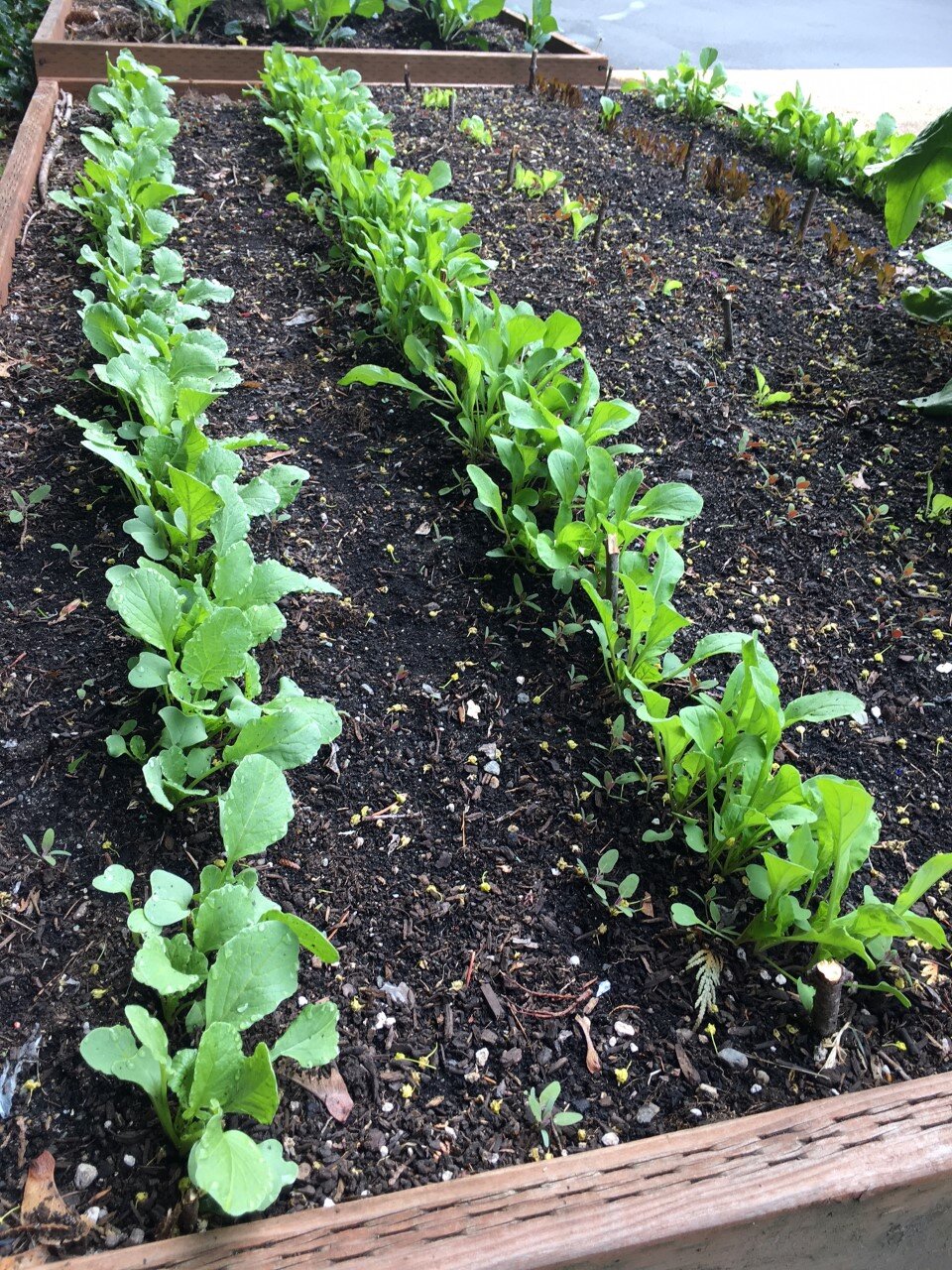It’s hard to believe but I (Adrienne) am writing this blog from sunny (but not as hot) San Diego! As many of you know, I have moved down here to start a graduate school program in Climate Science & Policy at Scripps Institute of Oceanography in July.
My journey of vocational discernment has been greatly shaped by my time with you all at Union/415. While I was with you, I was able to discern in community a call to ordained ministry (still in the works but maybe later), social work / thriving communities, environmental action, food justice, and local business that’s for the neighborhood. Though I’ll be focusing on the climate action piece this next year, I am very excited to see how all of my Union/415 experiences and interests will overlap my studies and overall vocation.
Staying Connected
reflecting on the past & looking toward the future
As we look backward and ahead regarding our Eco-Faith initiative and Union’s next iteration as we get back in person, I want to frame these wonderings within the (indigenous) idea that relationships never end. How might we live as People of the Way if relationships never end? How might we commit to acting for the care of all of Creation if we took seriously the earth’s ongoing relationship with us and all our ancestors, past and future? I can’t help but wonder about the timing and care of this message as I’ve heard it twice (maybe 3 times?) during my first week in San Diego.
The first time was from a Japanese American Episcopal priest serving in Okinawa. Nestled in our Zoom boxes, she described how beautiful it has been to get to know the community and indigenous Okinawan culture while walking with her parish through the uncertainties of a still very real COVID pandemic. She detailed how important relationships are to people there (especially the older folks most impacted by the virus) and shared there is no word in Okinawan for goodbye because culturally, relationships never end.
A day or two later, I was reading about the 751 more unmarked graves found at a former residential school in Saskatchewan, Canada. As I mourned these children and the history of genocide that the Church and State perpetuate all over the world, a package arrived. In it was a thank you present from Union: a wool blanket designed by Snoqualmie Tribal Members McKenna Sweet Dorman and Jaime Martin. The timely gift was different shades of brown (so earthy!) and “incorporates designs found on traditional basket weavings from the Puget Sound region” (see above link for more). The last note said:
These blankets were designed with wrapping, gifting, and honoring in mind. The meeting of the design from each side to the other will speak to the continuous quality of time and intergenerational connection through time. The intentional colors of the blanket reflect the use of natural plants, dyes, and materials used by traditional artists. This design speaks to Snoqualmie Tribe's collective past, present and future.
After learning in Kitchen Table Conversations of Native histories and re-imagined futures for Coastal Salish peoples and other Native folks on Turtle Island, this gift thoughtfully wrapped and held me — a tangible reminder of the histories, communities, and relations that have shaped my work at Union, alongside my hopes for deepened Union relationships with local tribes. The blanket’s Native context and Union’s gift remind me, though not quite in the same language: relationships never end…we are all part of Creation…we will always be connected.
This view of time and of relationship encompasses our sense of self in relation to the community, how we treat one another, and the ways we act for the earth. Though I am stepping away, I wonder who might step in and alongside my frank and action-oriented Eco-Faith counterpart: Gary Cooke. I believe that the momentum we’ve all created together is meaningful and one way Union can continue to show God’s deep love for all of Creation.
If you are interested in becoming more involved with Eco-Faith, please email Gary. For the rest of the summer, we will be collecting produce on Thursdays before noon at the McCollough’s in N. Seattle, 415, and the Downey’s in W. Seattle. The beautiful produce from our dispersed community gardens gets distributed to neighbors at Compass House Dexter.
As I hold on to the significance of relationships never ending, I will always think fondly of my Union community! But to be sure, I think I had more profound exhortations and reflections of gratitude for Union in my Sunday Zoom goodbye (Gary’s prayer that sent me on my way had us all crying!). What I do recall from that message is: Union is doing the Kin-dom work in so many areas; keep showing up tangibly!
I will leave the Eco-Faith blog world (for now) with some exhortations from Jesus…a 1st century indigenous Palestinian Jew and Creator, Redeemer, and Sustainer of the cosmos (and all our relations):
“Believe me: I am in my Father and my Father is in me. If you can’t believe that, believe what you see—these works. The person who trusts me will not only do what I’m doing but even greater things, because I, on my way to the Father, am giving you the same work to do that I’ve been doing. You can count on it. From now on, whatever you request along the lines of who I am and what I am doing, I’ll do it. That’s how the Father will be seen for who he is in the Son. I mean it. Whatever you request in this way, I’ll do.”
- John 14:11-14, MSG















